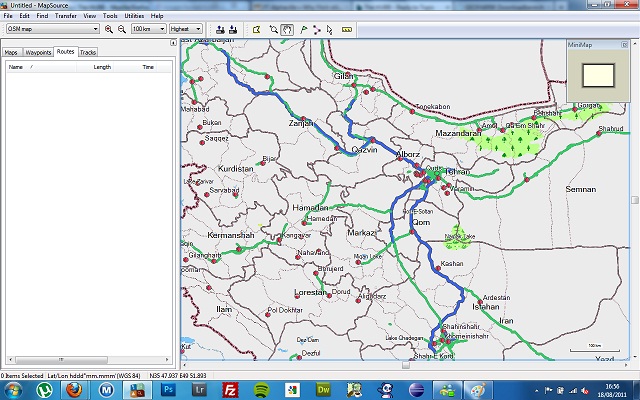

- GARMIN CUSTOM MAPS FOLDER FOR FREE
- GARMIN CUSTOM MAPS FOLDER CODE
- GARMIN CUSTOM MAPS FOLDER DOWNLOAD
- GARMIN CUSTOM MAPS FOLDER FREE
G-Raster will highlight the input section in red to remind you that it needs that data: Alternatively, try one of the links under the UTM/EPSG Info menu. You will also need to specify the UTM zone for that map you can get this information from USAPhotoMaps directly by choosing View => LatLon => UTM from the menu when viewing the maps you want to use the UTM zone will be listed at the top. The program will automatically process the file, and take you directly to Step 3.įor Type 2 files, you will need to select the JPG file created by USAPhotomaps, normally placed into that program’s main directory. The process is easiest for Type 1 files click the “Load …” button, and choose the file you want to create a KMZ overlay for.
GARMIN CUSTOM MAPS FOLDER CODE
But you will have to: a) Know what that coordinate system is b) Look up its EPSG code c) Enter the code in the specified box Type 4: General graphic files with geodata in worldfile format in any coordinate system. You will need to specify the UTM zone for the map, and also the datum and hemisphere if appropriate (default is northern hemisphere, WGS84 datum) Type 3: General graphic files with geodata in worldfile format for the UTM coordinate system (e.g. You will need to specify the UTM zone for the map you want to use.
GARMIN CUSTOM MAPS FOLDER FREE
Type 2: JPG imagery (“Big JPEG”) generated by the free program USAPhotoMaps. Links to that site and other useful sources of data are available from the program menu.
GARMIN CUSTOM MAPS FOLDER FOR FREE
A great source for free USGS topo maps and aerial imagery is the USGS Seamless Server, which offers this data in the compatible GeoTiff format. Note: These must include all geographic data, including the type of coordinate system used. GeoTiffs: TIFF images with embedded geodata.Type 1: Files with the geographic data embedded in the graphic file itself. G-Raster accepts four basic types of georeferenced raster imagery: Once installed, run the program, and it will walk you through the process step by step.
GARMIN CUSTOM MAPS FOLDER DOWNLOAD
You can find the link to the latest version of the program installer here (look for the G-Raster download link, then the link that says “Click here to start download”).




 0 kommentar(er)
0 kommentar(er)
